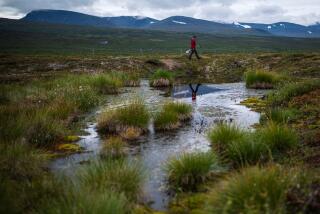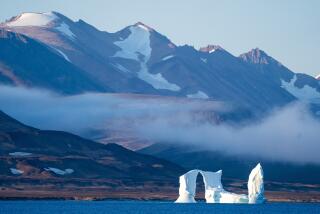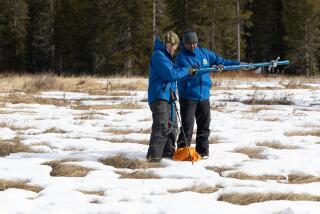Climate change: Greenland Ice Sheet is shrinking at high rate
The Greenland Ice Sheet has lost about 9,013 gigatonnes of water ice from 1900 to 2010 – and it’s dropping mass today at an increasing rate, an international team of scientists say. From 2003 to 2010, the ice sheet lost mass at a rate more than twice the rate during the entire 20th century, a new study shows.
The findings, published in the journal Nature, provide unprecedented estimates of the shrinkage of the Greenland ice reserves and could help scientists more fully account for the world’s rising sea levels.
Researchers have been using satellite data to track the Greenland Ice Sheet’s mass loss since the 1990s, because understanding its behavior is key to understanding the effects of climate change and the consequences on rising ocean levels. But to really grasp this long-term pattern, researchers need a fuller picture of the 20th century, pre-satellites, not just a snippet of the last few decades.
“The response of the Greenland Ice Sheet (GIS) to changes in temperature during the twentieth century remains contentious,” the study authors wrote, “largely owing to difficulties in estimating the spatial and temporal distribution of ice mass changes before 1992, when Greenland-wide observations first became available.”
That’s problematic, because it means that the Greenland Ice Sheet’s contribution to sea level rise has been largely overlooked for most of the 20th century – a yawning gap in the record, given that human industrial activity was significantly ramping up during this period. The start of the 20th century also marks, roughly, the decline of the Little Ice Age – an approximately four-century-long cold snap (around 1450 to 1850, depending on what part of the world you’re in) during which the Greenland Ice Sheet expanded.
So without the kind of direct satellite data we’ve had to work with since the 1990s, estimates of the sea level rise remain incomplete.
Even for the Fifth Assessment Report from the United Nation’s Intergovernmental Panel on Climate Change, “there’s blanks where they didn’t think there was enough data,” said lead author Kurt Kjaer, a glacial geologist at the Natural History Museum of Denmark.
However, there has been a rich trove of aerial photos taken in the 1980s. Now, using complex analytic methods, the researchers were able to take these photos and create 3-D reconstructions of the ice sheet over time. They were able to do this thanks to fresh trim lines: the easily recognizable boundaries distinguishing lighter regions high on the rock faces that had been previously abraded by the ice. They also analyzed moraines lacking vegetation that were close to the current-day ice fronts.
“Both features are considered to mark the culmination of [Little Ice Age]-glacial advances and to have been mainly formed during the 1700s or at the end of the 1800s,” the study authors wrote.
The scientists found that from 1900 to 1983, the Greenland ice sheet lost about 6,233 gigatonnes of mass. Then from 1983 to 2003, the sheet lost about 1,475 gigatonnes. And from 2003 to 2010, the ice sheet lost 1,305 gigatonnes.
This process has been speeding up in recent years. The rate of loss from 1900 to 1983 was about 75.1 gigatonnes per year; from 1983 to 2003 it was 73.8 gigatonnes per year, and from 2003 to 2010 it jumped to a 186.4 gigatonnes per year.
Because of the ice sheet’s shrinkage from 1900 to 2010, the sea levels have risen about 1 inch, the scientists concluded.
But those numbers tell only part of the story. Kjaer pointed out. Their analysis also allowed them to discovery consistently vulnerable points in the ice sheet.
Join the conversation on Facebook >>
“With one notable exception, the same areas that lost mass before are losing mass now.... So there’s a sensitivity map that comes out of the ice sheet,” he said.
The researchers were also able to show that the mass loss is largely coming not from chunks of glacier breaking off and floating into the sea, but from melting ice -- a clear sign linking the shrinking to rising air temperatures.
Follow @aminawrite on Twitter for more science news and “like” Los Angeles Times Science & Health on Facebook.
ALSO
Cancer: More than just bad luck?
Antidepressant use during pregnancy linked to autism, study says
Man’s best friend for a long time: Dogs go back 33,000 years, study finds







